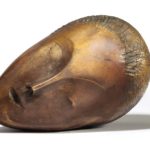LONDON.- A vast painting of volcanic catastrophe by the British artist John Martin (1789–1854) is exhibited for the first time in almost a century. When the Thames flooded in 1928, The Destruction of Pompeii and Herculaneum 1821 was widely considered to have been destroyed. After a painstaking restoration, it was unveiled to the public on 21 September 2011 as part of Tate Britain’s major exhibition, John Martin: Apocalypse. John Martin (1789–1854) was a key figure in the nineteenth-century art world, renowned for his dramatic scenes of apocalyptic destruction and biblical catastrophe. One of John Martin’s most ambitious works, this large oil painting depicts the devastating eruption of Vesuvius in 79 AD with survivors fleeing the destruction of the Roman cities Pompeii and Herculaneum. Measuring over eight feet across, it was the centrepiece of Martin’s 1822 solo exhibition at the Egyptian Hall in Picc
Tate Britain unveils John Martin’s lost masterpiece for the first time in almost a century
Back To Top







